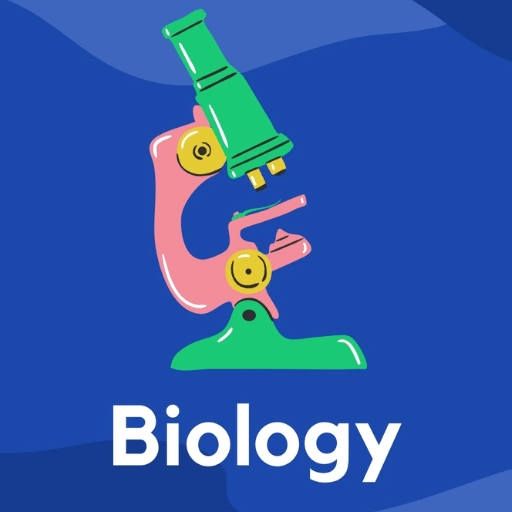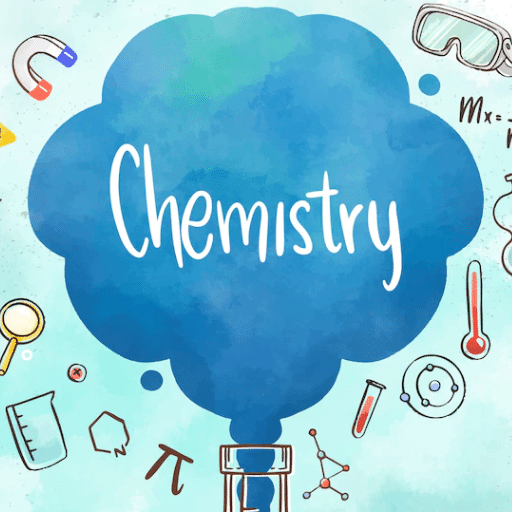Best Study Material for Year 11 Exam
Year 11 Exam > Year 11 Notes > Biology for GCSE/IGCSE > Chapter Note: Reproduction
Chapter Note: Reproduction | Biology for GCSE/IGCSE - Year 11 PDF Download
| Download, print and study this document offline |
Please wait while the PDF view is loading
Page 1 Reproduction in plants ? Reproduction is the process of making more of the same kind of organism ? There are 2 types of reproduction ? Asexual reproduction ? Sexual reproduction ? Asexual reproduction ? Asexual reproduction is the process resulting in the production of genetically identical offspring from a single parent ? Advantages of asexual reproduction ? Quick ? Only single parent required ? Good genetic characteristics always passed on ? No dispersal so offspring will grow in the same favorable environment ? Disadvantages of asexual reproduction ? Little variation, less adaptability to changing environment ? Unlikely to withstand disease if parent not resistant ? Lack of dispersal lead to increased competition for nutrients ? Sexual reproduction ? Sexual reproduction is the process involving the fusion of 2 gametes to form a zygote. This results in the production of offspring that is genetically different from the parents ? Gametes are sex cells that have half of the normal chromosome number (haploid) ? Therefore when male and female gamete fuse together, they form a new cell with normal chromosome number (diploid) ? Advantages of sexual reproduction ? Variation among offspring and therefore more adaptability to a changing environment ? More likely to withstand disease ? In plants, seed dispersal reduces competition for nutrients as offspring will grow in a different environment ? Disadvantages of sexual reproduction are ? Requires the fusion of 2 gametes ? Slower process ? Plant reproduction ? The sexual reproduction in plants involves the fusion of the male gamete (pollen) and the female gamete (ovule) ? A plant has both a male part containing the pollen and the female part containing the ovule ? Male part - stamen ? Female part - pistil/carpel ? Sexual reproduction occurs when the pollen from the stamen of one flower successfully reaches the ovule of either the same flower or a different flower ? The transfer of pollen is called pollination Page 2 Reproduction in plants ? Reproduction is the process of making more of the same kind of organism ? There are 2 types of reproduction ? Asexual reproduction ? Sexual reproduction ? Asexual reproduction ? Asexual reproduction is the process resulting in the production of genetically identical offspring from a single parent ? Advantages of asexual reproduction ? Quick ? Only single parent required ? Good genetic characteristics always passed on ? No dispersal so offspring will grow in the same favorable environment ? Disadvantages of asexual reproduction ? Little variation, less adaptability to changing environment ? Unlikely to withstand disease if parent not resistant ? Lack of dispersal lead to increased competition for nutrients ? Sexual reproduction ? Sexual reproduction is the process involving the fusion of 2 gametes to form a zygote. This results in the production of offspring that is genetically different from the parents ? Gametes are sex cells that have half of the normal chromosome number (haploid) ? Therefore when male and female gamete fuse together, they form a new cell with normal chromosome number (diploid) ? Advantages of sexual reproduction ? Variation among offspring and therefore more adaptability to a changing environment ? More likely to withstand disease ? In plants, seed dispersal reduces competition for nutrients as offspring will grow in a different environment ? Disadvantages of sexual reproduction are ? Requires the fusion of 2 gametes ? Slower process ? Plant reproduction ? The sexual reproduction in plants involves the fusion of the male gamete (pollen) and the female gamete (ovule) ? A plant has both a male part containing the pollen and the female part containing the ovule ? Male part - stamen ? Female part - pistil/carpel ? Sexual reproduction occurs when the pollen from the stamen of one flower successfully reaches the ovule of either the same flower or a different flower ? The transfer of pollen is called pollination ? The carpel is the female reproductive part of the plant. It is made of 3 important structures ? Stigma - the sticky surface that catches pollen ? Style - links stigma to ovary ? Ovary - contains ovules which develop into seeds after fertilization ? The stamen is the male reproductive part of the plant. It is made of two important structures ? Anther - contains pollen ? Filament - supports the anther ? Pollination ? Pollination is the transfer of the pollen (male sex cells) from the anther to the stigma ? Once the pollen lands on the stigma, it is transferred to the ovule (female sex cell) ? The fusion of the pollen and ovule leads to what we call fertilization ? There are 2 methods by which plants facilitate pollination ? Insect pollination ? Wind pollination ? Insect pollination ? Insect pollination uses insects that land on the flower to carry pollen ? As insects move around within the flower, some pollen gets caught onto the insect's body. The insect therefore physically carries pollen and successful pollination occurs when it rubs its body against a stigma of the same flower or a different flower ? Wind pollination ? Wind pollination uses the wind to carry pollen ? Pollen that gets carried by the wind may end up on the stigma of the same flower or a different flower Page 3 Reproduction in plants ? Reproduction is the process of making more of the same kind of organism ? There are 2 types of reproduction ? Asexual reproduction ? Sexual reproduction ? Asexual reproduction ? Asexual reproduction is the process resulting in the production of genetically identical offspring from a single parent ? Advantages of asexual reproduction ? Quick ? Only single parent required ? Good genetic characteristics always passed on ? No dispersal so offspring will grow in the same favorable environment ? Disadvantages of asexual reproduction ? Little variation, less adaptability to changing environment ? Unlikely to withstand disease if parent not resistant ? Lack of dispersal lead to increased competition for nutrients ? Sexual reproduction ? Sexual reproduction is the process involving the fusion of 2 gametes to form a zygote. This results in the production of offspring that is genetically different from the parents ? Gametes are sex cells that have half of the normal chromosome number (haploid) ? Therefore when male and female gamete fuse together, they form a new cell with normal chromosome number (diploid) ? Advantages of sexual reproduction ? Variation among offspring and therefore more adaptability to a changing environment ? More likely to withstand disease ? In plants, seed dispersal reduces competition for nutrients as offspring will grow in a different environment ? Disadvantages of sexual reproduction are ? Requires the fusion of 2 gametes ? Slower process ? Plant reproduction ? The sexual reproduction in plants involves the fusion of the male gamete (pollen) and the female gamete (ovule) ? A plant has both a male part containing the pollen and the female part containing the ovule ? Male part - stamen ? Female part - pistil/carpel ? Sexual reproduction occurs when the pollen from the stamen of one flower successfully reaches the ovule of either the same flower or a different flower ? The transfer of pollen is called pollination ? The carpel is the female reproductive part of the plant. It is made of 3 important structures ? Stigma - the sticky surface that catches pollen ? Style - links stigma to ovary ? Ovary - contains ovules which develop into seeds after fertilization ? The stamen is the male reproductive part of the plant. It is made of two important structures ? Anther - contains pollen ? Filament - supports the anther ? Pollination ? Pollination is the transfer of the pollen (male sex cells) from the anther to the stigma ? Once the pollen lands on the stigma, it is transferred to the ovule (female sex cell) ? The fusion of the pollen and ovule leads to what we call fertilization ? There are 2 methods by which plants facilitate pollination ? Insect pollination ? Wind pollination ? Insect pollination ? Insect pollination uses insects that land on the flower to carry pollen ? As insects move around within the flower, some pollen gets caught onto the insect's body. The insect therefore physically carries pollen and successful pollination occurs when it rubs its body against a stigma of the same flower or a different flower ? Wind pollination ? Wind pollination uses the wind to carry pollen ? Pollen that gets carried by the wind may end up on the stigma of the same flower or a different flower ? Self pollination ? It is the transfer of pollen from the anther of one flower to the stigma of the same flower, or a different flower of the same plant ? Advantages ? Only one parent required so less reliance on pollinators ? Less competition among offspring ? Disadvantages ? Less variation (since genes are all from the same plant) ? Less adaptable to changing environment and resistance to disease ? Cross pollination ? It is the transfer of pollen from the anther of one flower to the stigma of another flower on a different plant of the same species ? Advantages ? Increased variation ? Greater adaptability to changing environment and more resistant to disease ? Disadvantages ? More reliance on pollinators ________________________________________________________________________________________ ? Fertilization ? When a pollen grain lands on the stigma of the correct species, a pollen tube will begin to grow ? It grows through the style, enters through a small gap in the ovary called the micropyle and eventually reaches the ovule ? The nucleus of the pollen then passes along the pollen tube and fuses with the nucleus resulting in successful fertilization ? The zygote eventually develops into a seed. The seed remains dormant until the conditions are right and germination occurs ? Germination ? Germination is the development of a plant from a seed or spore after a period of dormancy ? The conditions that must be met for germination ¦ Water - for activation of enzymes ¦ Oxygen - for respiration for growth ¦ Temperature - optimum temperature for enzymesRead More
|
110 videos|158 docs|34 tests
|
FAQs on Chapter Note: Reproduction - Biology for GCSE/IGCSE - Year 11
| 1. What is reproduction? |  |
| 2. What are the different types of reproduction? |  |
Ans. There are two main types of reproduction: sexual reproduction, which involves the combination of genetic material from two individuals, and asexual reproduction, which only requires one parent and involves the production of offspring that are genetically identical to the parent.
| 3. What are the advantages of sexual reproduction over asexual reproduction? |  |
Ans. Sexual reproduction allows for genetic diversity among offspring, which can increase the chances of survival in changing environments. It also helps in the elimination of harmful genetic mutations.
| 4. How does fertilization occur in sexual reproduction? |  |
Ans. Fertilization in sexual reproduction occurs when a sperm cell from a male individual fuses with an egg cell from a female individual, resulting in the formation of a zygote with a unique combination of genetic material from both parents.
| 5. What are some examples of asexual reproduction in plants and animals? |  |
Ans. Some examples of asexual reproduction in plants include vegetative propagation, where new plants grow from roots, stems, or leaves. In animals, examples include budding in hydra and regeneration in starfish.
Related Searches





























